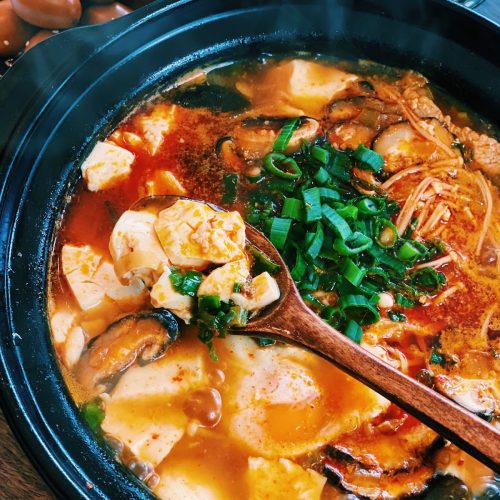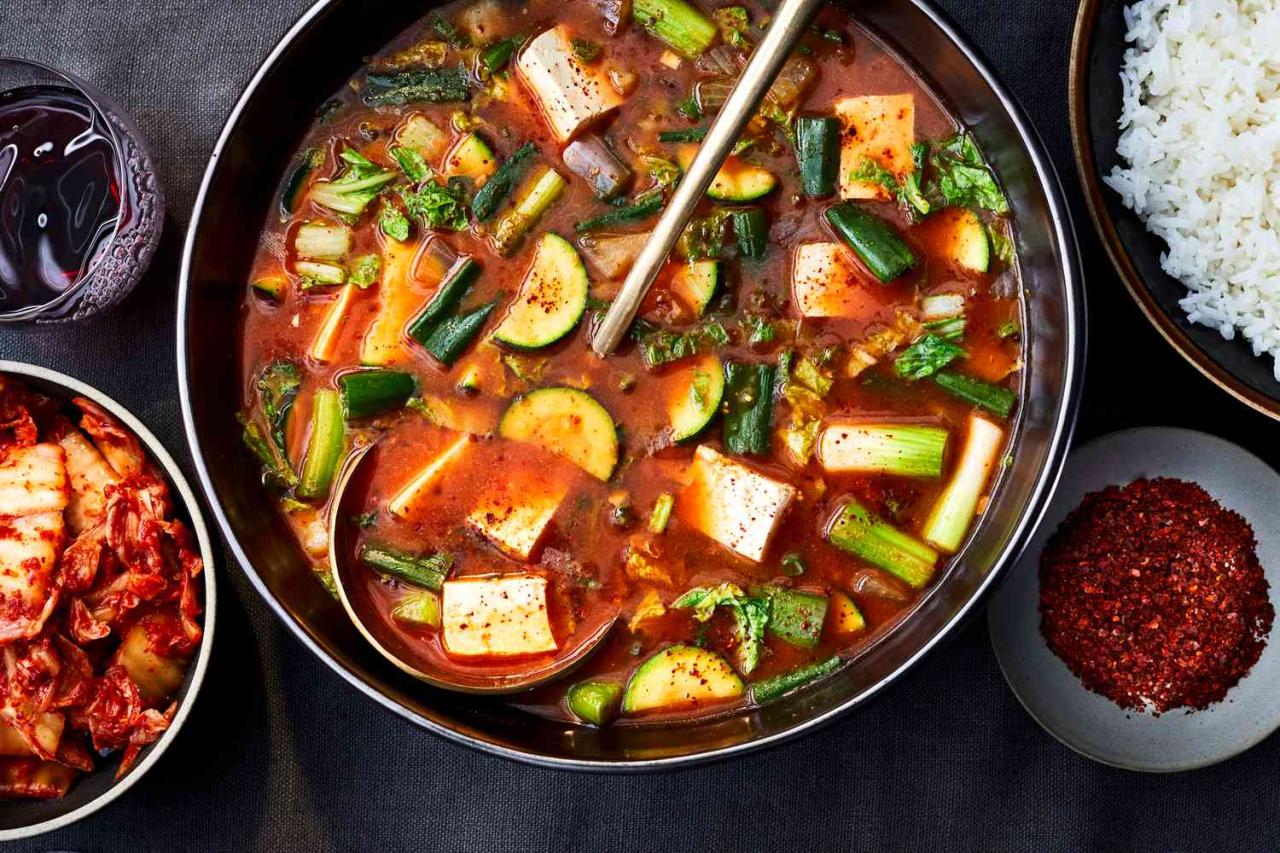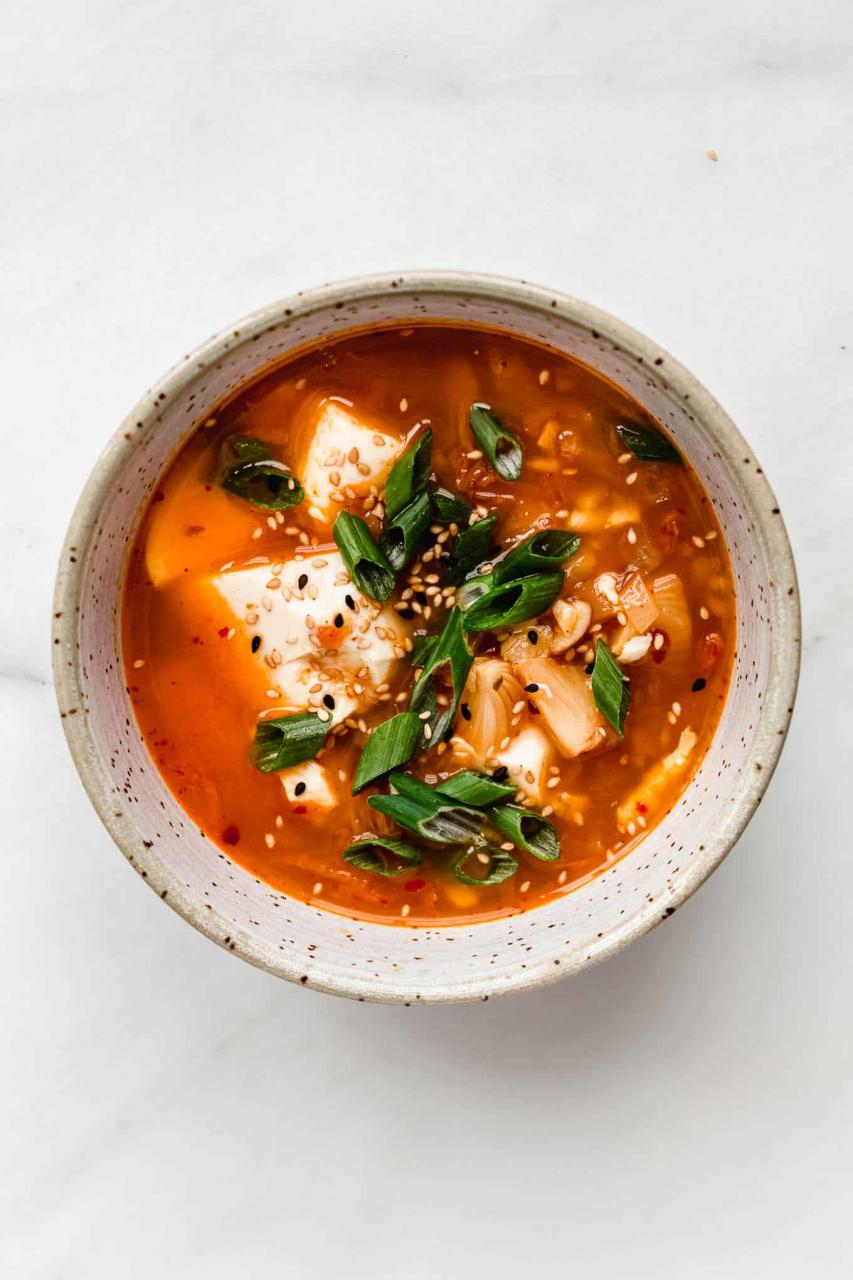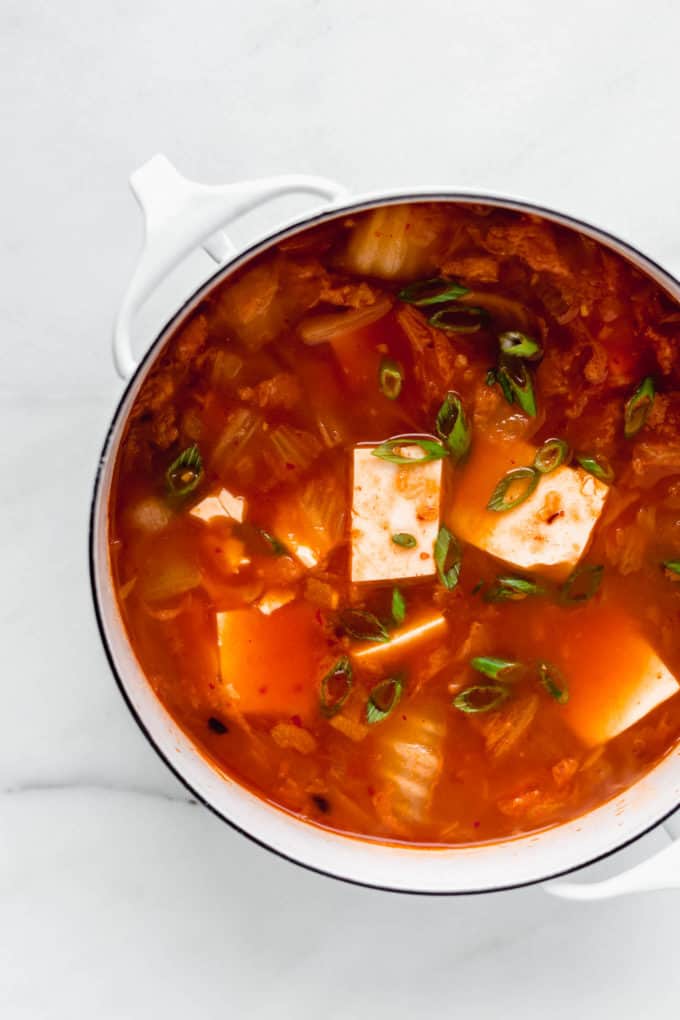The culinary journey into the world of Tofu Stew presents an exciting exploration of textures, flavors, and nutritional benefits. This introduction unveils the significance of tofu as a versatile and central ingredient in various culinary traditions, particularly in Asian cuisines where it plays a pivotal role. Packed with plant-based protein, tofu stew offers a comforting and nourishing meal option that caters to a wide range of dietary preferences, including veganism and vegetarianism.
Tofu, derived from soybeans, has been a staple food item across many Asian countries for centuries. It is celebrated for its ability to absorb flavors and adapt to any type of dish – from savory to sweet. Tofu stew, in particular, highlights the ingredient’s harmonious blend with a multitude of spices, vegetables, and sometimes meats, showcasing tofu’s impressive versatility. Each region adds its own signature twist to tofu stew, making it a dish rich in cultural history and variety.
Tofu Stew Recipe


Tofu Stew
Equipment
- 1 pressure cooker
- 1 bowl
Ingredients
- 1/4 c. Basil
- 1 Tbsp. Olive oil
- 1 Chopped celery stalk
- 1/2 c. Red wine
- 2 c. Vegetable stock
- 1 Tbsp. Cornstarch
- 2 Tbsp. Tomato paste
- 1 c. Diced tomatoes
- 1 Chopped zucchini
- 1 Chopped carrot
- 1 Chopped onion
- 2 Chopped garlic cloves
- 1 Diced tofu
Instructions
- For this recipe, take out the pressure cooker and let the onion cook with the oil. Add in the garlic and the tofu and let this become browned.
- Now it is time to cook up the celery, carrot, and zucchini and cook a bit longer.
- Inside of a bowl, mix together the red wine and cornstarch. Pour this all over the vegetables that are in the pressure cooker and keep on stirring for a bit.
- Now you can add in the tomato paste, tomato, and vegetable stock and stir it well, making sure to scrape at the bottom to avoid anything sticking.
- Once all of these are inside the pressure cooker, place the lid on top and use a high pressure to cook the vegetables for about 10 minutes.
- Allow the pressure to have some time to release the pressure used around the vegetables and then serve with a bit of basil.
Cooking Tips about Tofu Stew

- Selecting Tofu: Choosing the right type of tofu is crucial for your stew. Firm or extra-firm tofu is best as it holds up well during cooking. For a more interesting texture, consider using pressed tofu which has less moisture and can absorb flavors better.
- Pressing Tofu: To ensure your tofu absorbs the stew flavors, press it before cooking. Wrap your tofu in a clean kitchen towel or paper towels and place a heavy object on top (like a pan or a book) for about 15-30 minutes to squeeze out excess water.
- Marinating Tofu: For an added flavor boost, marinate the tofu before adding it to the stew. Use ingredients like soy sauce, garlic, ginger, and sesame oil for marination. This step enhances the tofu’s taste and complements the stew’s overall flavor profile.
- Building a Flavor Base: Start your tofu stew with a solid foundation by sautéing aromatics like onions, garlic, and ginger until they’re soft and fragrant. This builds a rich flavor base that infuses the entire dish.
- Using High-Quality Broth: The broth is a key component of any stew. Use a high-quality vegetable broth or make your own for the best depth of flavor. This not only contributes to the stew’s taste but also its nutritional value.
- Incorporating Vegetables: Add a variety of vegetables to your tofu stew for color, texture, and nutrients. Consider quick-cooking vegetables like spinach, bell peppers, or mushrooms, which complement the soft texture of tofu.
- Seasoning Properly: Don’t forget to season your stew properly. Start with a little salt and adjust as you go. Remember, the flavors will concentrate as the stew cooks down, so it’s better to err on the side of caution and add more seasoning as needed towards the end of cooking.
- Simmering Gently: Tofu stews benefit from slow, gentle simmering. This allows the tofu to absorb the flavors of the broth and other ingredients without falling apart. Avoid boiling vigorously as this can break the tofu pieces.
- Adding Acidic Touch: A splash of acidity can brighten the flavors of your stew. Consider adding a bit of lemon juice or vinegar towards the end of the cooking process. Adjust according to your taste preference.
Serving suggestions about Tofu Stew

- Steamed White or Brown Rice: A bowl of fluffy rice serves as a perfect backdrop to the Tofu Stew, absorbing its savory flavors and adding a comforting carbohydrate base to the meal.
- Quinoa or Farro: For a nutritious and hearty alternative to rice, consider serving the stew over cooked quinoa or farro. These grains add an excellent texture contrast and pack a protein punch that complements the tofu beautifully.
- Crusty Bread: Offer slices of warm, crusty bread on the side to dip into the stew. The bread will soak up the delicious broth, ensuring not a drop is wasted.
- Korean Banchan (Side Dishes): If the Tofu Stew has a Korean flavor profile, serve it with an assortment of banchan such as kimchi, seasoned spinach, or bean sprouts for an authentic dining experience.
- Sautéed Greens: A side of sautéed greens like kale, spinach, or Swiss chard with garlic pairs well by adding a fresh and slightly bitter counterbalance to the stew’s richness.
- Noodles: Serve the tofu stew over a bed of soba noodles, udon, or rice noodles for an Asian-inspired twist that makes the dish even more filling and versatile.
- Roasted Vegetables: Side dishes of roasted vegetables like cauliflower, carrots, and bell peppers can add a delightful sweetness and earthiness that complement the savory notes of the stew.
- Fresh Herbs and Scallions: Garnish the stew with fresh herbs such as cilantro, Thai basil, or scallions to inject a burst of freshness and color right before serving.
- Pickled Radishes or Cucumbers: The tangy crunch of pickled vegetables provides a refreshing contrast to the soft, comforting textures of the stew.
- Seasoned Tofu on the Side: For additional protein and variety, include a small plate of marinated and pan-fried tofu with a crisp exterior as an extra treat for tofu enthusiasts.
Top 5 FAQs about Tofu Stew

- What type of tofu is best for making tofu stew? For tofu stew, it’s advisable to use firm or extra-firm tofu as these varieties hold up well during cooking. If you’re looking for an interesting texture, consider using pressed tofu, which has less moisture and can absorb flavors more effectively.
- How can I make my tofu stew more flavorful? Enhancing the flavor of your tofu stew can be achieved in a few ways. Start by pressing your tofu to remove excess water, then marinate it with ingredients like soy sauce, garlic, ginger, and sesame oil before adding it to the stew. Building a rich flavor base with sautéed aromatics such as onions, garlic, and ginger, and using high-quality broth can also elevate the taste significantly.
- Is tofu stew suitable for vegetarians or vegans? Yes, tofu stew is suitable for both vegetarian and vegan diets. Tofu is an excellent plant-based protein source that contains all nine essential amino acids and is rich in iron, making it a hearty and nutritious option for those following plant-based diets. Just ensure that any additional ingredients, such as broth, are also vegetarian or vegan.
- Can I add other ingredients besides tofu to my tofu stew? Absolutely! Tofu stew is incredibly versatile, allowing you to blend tofu harmoniously with spices, vegetables, and sometimes meats (unless catering to vegetarian or vegan preferences). Common additions include leafy greens, mushrooms, bell peppers, and for non-vegetarians, meats of choice. This versatility not only reflects the cultural variety of tofu stew but also lets you tailor it to personal tastes and dietary requirements.
- How should tofu stew be served for the best dining experience? To elevate the dining experience, serve your tofu stew hot, ideally with sides that complement its flavors and textures. Steamed white or brown rice, crusty bread, sautéed greens, or even noodles like soba or udon pair well with tofu stew, absorbing the savory flavors and adding comforting carbohydrate elements to the meal. Adjust the sides based on the specific flavor profile of your stew and any dietary considerations.
The exploration of Tofu Stew offers a journey through flavors, textures, and the nutritional bounty inherent in a dish that sits at the crossroads of tradition and modern culinary innovation. By foregrounding tofu—a versatile and nutritious soy product revered across various Asian culinary traditions—Tofu Stew emerges as a canvas on which the rich tapestry of cultural history, dietary preferences, and regional tastes are vividly illustrated.
Leave a Reply